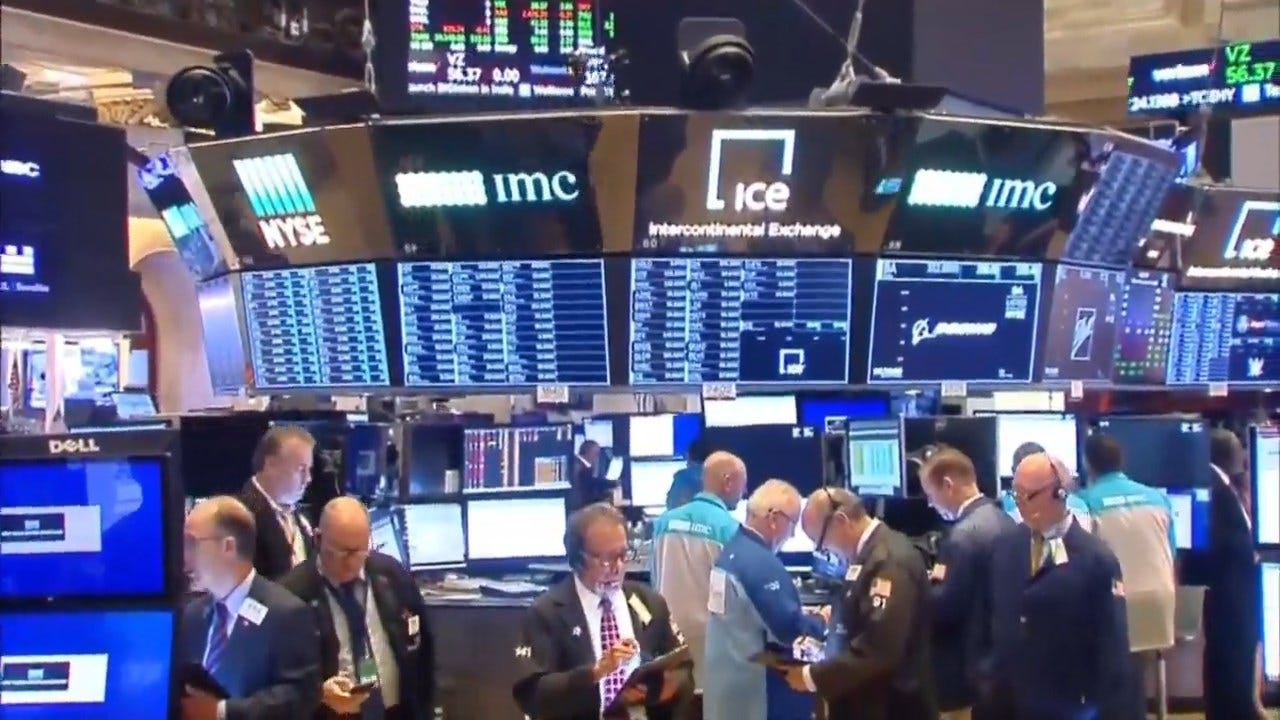Why The 'Inverted Yield Curve' Is Fueling Recession Fears
The bond market is signaling concerns about a possible recession, with the "yield curve" inverting to its lowest levels since 2007. The warning signal comes amid rising tensions due to the U.S. trade war with China and a global economic slowdown.Wednesday, August 14th 2019, 5:32 pm
- An "inverted yield curve" is a financial phenomenon that has historically signaled an approaching recession.
- Longer-term bonds typically offer higher returns, or yields, to investors than shorter-term bonds. The yield curve inverts when yields on that shorter-term debt exceeds those on longer maturity debt.
- The yield curve on a widely watched indicator inverted on Wednesday for the first time since June 2007, before the Great Recession.
The bond market is signaling concerns about a possible recession, with the "yield curve" inverting to its lowest levels since 2007. The warning signal comes amid rising tensions due to the U.S. trade war with China and a global economic slowdown.
The yield on 10-year Treasury bonds dipped below the 2-year Treasury, the first time that's happened since June 2007. That is fueling concerns about a possible economic downturn because the spread between those two investments is one of the most closely watched recession indicators. On top of the that, the yield curve is also inverted on 3-year Treasury bonds compared with the 10-year Treasury.
Notably, alarm bells are flashing despite the Federal Reserve cutting interest rates last month for the first time since 2008 -- a sign investors fear that the central bank may not be able to forestall an economic slowdown, analysts noted. An inverted yield curve reflects concerns from investors that economic headwinds such as the trade war and a slowing global economy may impact future returns.
"The market may be increasingly skeptical that 2-3 'insurance cuts' can offset much of that uncertainty," TD Securities strategists Priya Misra and Oscar Munoz wrote in a recent research note. Federal Reserve Chairman Jerome "Powell was clear that the cut was not the start of a lengthy easing cycle. But he couldn't convincingly argue that a few cuts would provide a powerful stimulus to growth either."
So what exactly is an inverted yield curve, and how worried should you be?
What is an inverted yield curve?
A bond yield is the return an investor gets on a government or corporate bond. Typically, investors demand higher yields from longer-term bonds to compensate them for the higher risk of tying up their money for a longer period of time.
When yields on some shorter-term bonds rise above those on longer bonds -- as is currently the case -- it has historically signaled a pending recession.
As a result, some experts are warning investors to prepare for a possible downturn. After all, the yield curve inverted roughly 14 months before each of the past nine U.S. recessions. Others say a slowdown isn't a sure thing and that the yield curve is a red flag, not a divining rod. To be sure, by many measures the economy is healthy, with low unemployment, rising wages and and steady GDP growth.
Still, the warning signs are there, according to some experts.
"From our research, the bond market is now anticipating a recession to occur within 2-3 years," wrote Nick Raich, CEO of The Earnings Scout, in a Wednesday research note. "In fact, the last five recessions have been preceded by a 2-10 inversion," meaning the inversion on the 2-year and 10-year Treasuries.
Lower rates ahead?
One takeaway for investors is that the inverted yield curve suggests a more near-term development than a recession: Interest rate cuts from the Federal Reserve.
Only last year, the central bank was gradually raising interest rates, arguing that pushing up rates was necessary to keep the economy from overheating. After President Donald Trump took issue with the Fed's rate hikes, complaining that it was slowing growth, the Fed earlier this year said it would take a pause in rate-hike policy amid concerns about economic growth. And last month, it made its first rate cut since the recession.
The inverted yield curve suggests the Fed may continue to cut rates later this year and in 2020, analysts say.
"Our 3-month to 10-year recession probability model estimates a 55% chance of a recession within 12 months, which is the highest level since 2007," the TD Securities analysts said. "This supports our Fed call of 50bp of more eases in 2019 (September and October), followed by an additional 75bp of easing in 2020."
How worried should you be?
Experts say to to remain alert but aware that recessions don't always follow inverted yield curves. "False positives do occasionally occur: the first inversion isn't always the one that ultimately signals a downturn," the TD Securities analysts noted.
And August -- as well as election years -- tend to be tough for stocks on a historical basis, according to analysts at LPL Financial and Natexis.
"Corrections tend to occur this time of year, so even though we expect stocks to move higher between now and year-end, some bumps can be expected," wrote John Lynch, Chief Investment Strategist, LPL Financial, in a research note earlier this month.
In the meantime, the inverted yield curve could mean a recession -- but in two to three years, The Earnings Scout's Raich said.
More Like This
August 14th, 2019
March 22nd, 2024
March 14th, 2024
February 9th, 2024
Top Headlines
April 17th, 2024
April 17th, 2024











